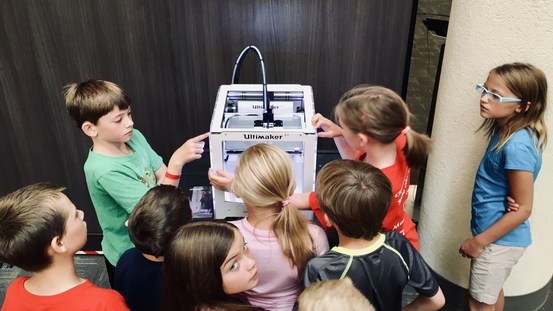The creation of a learning environment in the classroom that inspires students to take an active role in their education is one of the biggest issues facing instructors today. However, while employing traditional student learning methodologies, it may be difficult to maintain that motivation. That's why active learning practices are crucial for the current day classroom.
Students in more passive recipients of information imparted to them by an instructor imparting the information imparted to them by an instructor imparted to them by a passive recipients of knowledge imparte Active learning, on the other hand, is designed with the idea that every single student will take part in the learning process.
Students are put at the center of the learning process by using active learning strategies, which encourages inspiration, connection, and energy in the classroom.
What Exactly Is an Active Learning Strategy?
Given that it encompasses a wide range of instructional strategies, active learning can take many distinct forms. These strategies frequently involve group work in the classroom, but they can also include individual assignments and discussions. These teaching methods include short, simple activities like journaling, problem-solving, and partnered discussions as well as longer, more complex activities or educational contexts like research articles, role-playing, and structured team-based learning.
The importance of experiential learning is emphasized by the active learning paradigm. It enables students to acquire knowledge on their own and apply it to solve specific problems they encounter. Higher-order abilities like critical thinking and imagination can be developed by students who participate in active learning.
Advantages of Active Learning Techniques:
Numerous benefits of active learning for students include increased self-esteem and increased creativity. Knowing these benefits will help both students and teachers better understand how active learning may benefit their future prospects.
The following are some significant benefits of active learning in the classroom:
1. Strengthens teamwork skills
Cooperation is the foundation of most student learning practices. It's possible that students who solely receive instruction via tests and individual tasks won't be ready for today's more collaborative careers. As they collaborate in small groups, students can gain the abilities needed for collaboration in the workplace through active learning.
2. Encourages Taking Chances
Students could initially oppose the transition to active learning because it's simple to take notes in class or doze off until the lecture is ended. Students are encouraged to venture outside of their comfort zones through active learning. As they get more at ease debating their points of view, defending their judgments, and elaborating on one another's opinions, they will grow in confidence and self-esteem.
3. Requires Students to Prepare
There were undoubtedly classes in college that only required students to show up for class. The professor probably didn't notice whether you were drowsy or indifferent if you sat in the back rows of the lecture hall. Additionally, since many programs are now provided partially or totally online, it is much easier to switch off. Today, an active learning environment may be crucial because of this. Students are more motivated to show up in both their thoughts and their body when everyone is engaged and excited in class.
4. Encourages Engagement
Active students are totally absorbed in their academics. When debating, learning, or addressing issues, they build better comprehension through analyzing concepts. These pupils are substantially less likely to multitask during Zoom or Google Meet sessions.
5. Improves Analytical Capabilities
In modern society, it is becoming more and more important to be able to spot a reputable source or a flimsy argument. Active learning shifts the focus of learning away from passively (and possibly uncritically) receiving information by actively engaging with resources and other viewpoints. Furthermore, as students discuss their ideas, they strengthen their thinking, question presumptions, and improve their ability to recognize logical fallacies.
What Sets Active Learning Apart from Passive Learning
The instructor leads the lecture, provides all class materials, and initiates class discussions under the passive learning technique as opposed to active learning. Students learn this information while paying attention and taking notes. Some significant differences between active and passive learning include the following:
1. Instructional techniques
Presenting, slide shows, textbook readings, and instructional films are examples of passive learning strategies. Active learning involves more hands-on techniques including group discussions, role-playing, and field trips that enable students interpret the content for themselves.
2. The Storage of Information
Activities for passive learning frequently result in lower student accomplishment than active learning strategies because they make it simpler for pupils to lose all interest.
3. The Teacher's Position
While passive learning methods leave all of the onus of teaching on the teacher, active learning tactics enable teachers to create an environment where students can learn for themselves. Active learning promotes lively discussions, whereas passive learning favors one-way lectures.
4. Student Participation
Pupils aren't encouraged to participate in discussions or arguments during passive learning class hours, making it difficult for the teacher to tell which students understand the course material and which don't. In an environment where active learning is taking place, all students—subgroups included—must participate.
It's crucial to keep in mind that active and passive learning are not mutually exclusive. Teachers commonly combine an active learning strategy with a passive teaching technique (such as a lengthy lecture on the Interactive Display in the classroom in front of the entire class). For instance, a teacher might provide a clicker to each student to use throughout the lesson whenever they don't understand a concept.
Get in touch with METZ Group and get more details on our services.






